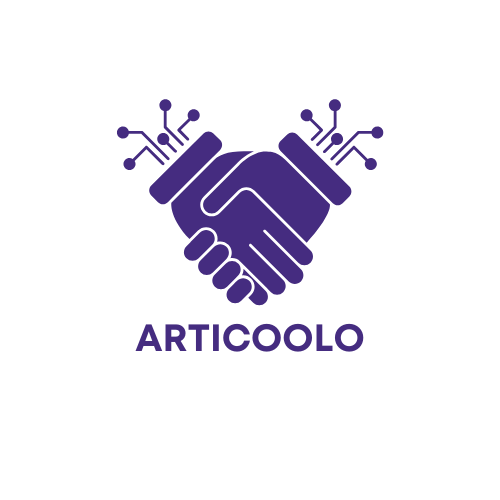In the ever-evolving world of ecommerce, driving sales is only part of the challenge. The real key to growth lies in understanding how potential customers interact with your brand, identifying bottlenecks, and optimizing your marketing funnel. A well-optimized funnel ensures that every visitor has a clear path from discovery to purchase, maximizing conversions while reducing wasted ad spend.
Understanding the Ecommerce Marketing Funnel
The marketing funnel is a visual representation of the customer journey. At the top, you have awareness, where shoppers first discover your products. In the middle lies consideration, when they evaluate your offerings against competitors. Finally, at the bottom is the conversion stage, where they make a purchase or complete a desired action.
For ecommerce businesses, the funnel is not just a concept—it’s a critical framework that informs ad targeting, content creation, and sales strategy. Optimizing each stage can significantly impact revenue and customer loyalty.
Identifying Bottlenecks in Your Funnel
Before optimizing, it’s crucial to understand where potential customers drop off. Analytics tools like Google Analytics, Shopify reports, or CRM dashboards provide valuable insights into visitor behavior. Common bottlenecks include:
- Low engagement on product pages
- High cart abandonment rates
- Ineffective email marketing sequences
- Misaligned ad targeting
By pinpointing these issues, you can focus your optimization efforts where they matter most.
The Role of Accurate Conversion Tracking
Conversions are the backbone of ecommerce success. Without accurate data, your marketing decisions rely on guesswork. Traditional tracking methods, such as pixel-based tracking, often miss a significant portion of conversions due to cookie restrictions and privacy settings. This gap can lead to inefficient ad spending and missed revenue opportunities.
Here’s where advanced solutions come into play. Implementing a CAPI setup for ecommerce allows you to feed complete and reliable conversion data from your website directly to your advertising platforms. This server-side tracking method ensures that you capture every meaningful action, even when browser restrictions block traditional tracking scripts.
What is a CAPI Setup for Ecommerce?
CAPI, or Conversion API, is a modern solution designed to bridge the gap between your ecommerce data and ad platforms. Unlike standard pixel tracking, CAPI sends conversion data directly from your server to platforms like Facebook Ads, Google Ads, or Bing Ads.
The benefits of this approach are clear:
- Improved accuracy: Every conversion is recorded, even with ad blockers or cookie restrictions.
- Enhanced targeting: Ad algorithms receive richer data, helping them identify high-value customers.
- Better ROI: Fewer wasted ad impressions, higher conversion rates, and optimized ad spend.
Implementing a CAPI setup for ecommerce is an essential step for any business that relies on paid advertising to drive sales.
Using Tools to Streamline Funnel Optimization
Several tools help ecommerce marketers optimize their funnels effectively. One notable example is RedTrack. RedTrack provides a free conversion API that sends complete conversion data to your ad platforms, even when cookies or privacy settings would otherwise prevent tracking.
Key Features of RedTrack for Funnel Optimization
- Flawless Conversion Tracking: Capture conversions that pixels can’t track, ensuring no revenue is lost.
- Powerful Conversion API: Feed accurate, enriched data to ad platforms to improve targeting and ROAS.
- Automation and Optimization: Reduce manual campaign management by allowing platforms to self-optimize based on precise conversion data.
- Integration with Major Platforms: Works seamlessly with Meta Ads, Google Ads, TikTok Ads, Bing Ads, and more.
By leveraging tools like RedTrack, ecommerce businesses can simplify funnel optimization while improving overall campaign performance.
Optimizing Awareness and Consideration Stages
The top and middle stages of your funnel are critical for building interest and trust. To enhance these stages:
- Target the Right Audience: Use precise segmentation to reach shoppers most likely to convert.
- Engage Through Content: Blog posts, social media, and email campaigns provide value and build brand credibility.
- Track Engagement Metrics: Monitor bounce rates, page views, and click-through rates to identify content gaps.
Accurate data from a CAPI setup for ecommerce allows you to see how different audiences interact with your campaigns, making it easier to refine messaging and targeting.
Improving Conversion Rate at the Bottom of the Funnel
Once visitors are considering a purchase, the focus shifts to conversion. Strategies include:
- Simplifying Checkout: Minimize steps and provide multiple payment options.
- Offering Personalized Recommendations: Display products based on browsing history or cart content.
- Retargeting Abandoned Carts: Use automated email or ad campaigns to recover lost sales.
Integrating server-side tracking ensures that every action, from page views to purchases, is captured, allowing you to measure the effectiveness of these tactics accurately.
Leveraging Data for Continuous Improvement
Optimization is not a one-time process. Continuous testing and iteration are key. By analyzing conversion data, you can:
- Identify which campaigns deliver the highest ROI
- Adjust ad spend to focus on profitable audiences
- Test variations of product pages, checkout flows, and offers
Tools with CAPI integration provide a complete view of conversions, empowering marketers to make data-driven decisions without missing critical insights.
Success Stories and Industry Insights
Many ecommerce businesses have benefited from advanced conversion tracking solutions. For example, RedTrack users report capturing up to 40% more conversions than traditional pixel tracking would show. This additional data enables smarter ad spending, improved targeting, and ultimately, higher revenue.

Customer stories highlight how proper tracking and automation simplify campaign management while enhancing results. From D2C brands to large agencies, the ability to see every conversion empowers teams to focus on strategy rather than manual monitoring.
Practical Tips for Implementing a CAPI Setup for Ecommerce
- Audit Your Current Tracking: Identify gaps in conversion data and ensure all critical actions are tracked.
- Choose a Reliable Tool: Platforms like RedTrack provide robust APIs and integrations to simplify setup.
- Test and Validate Data: Confirm that conversions are being recorded accurately across all ad platforms.
- Integrate with Ad Platforms: Ensure your conversion data feeds into all relevant advertising channels for improved targeting.
- Monitor and Optimize: Continuously analyze performance and adjust campaigns based on reliable insights.
Conclusion
Optimizing your ecommerce marketing funnel is essential for maximizing conversions and revenue. A key part of this process is implementing a CAPI setup for ecommerce, which ensures that you capture all conversions, even in a privacy-first world.
By combining accurate data collection, automated optimization, and strategic campaign management, ecommerce businesses can reduce wasted ad spend, improve targeting, and scale more efficiently. Tools like RedTrack make this process easier, allowing marketers to focus on strategy while letting their campaigns optimize themselves.














Discussion about this post